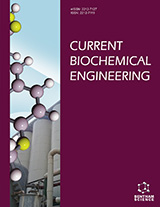Abstract
The development of soft materials for various smart applications, such as in
soft robotic devices derived from elastomers, naturally occurring rubbers and polymers,
can be traced back to 1940s. Contrary to conventional robotics, soft robotic research
was primarily dedicated to reproducing and mimicking the elasticity and compliance of
biological substrates. In the last few decades, however, subsequent progress in soft
robotic devices and manipulators has been witnessed within the subcategories of
material & processing, sensor and actuators. In this chapter, a comprehensive
introduction to soft robotics engineering is highlighted exclusively from the perspective
of materials development. Soft material prototypes are eventually exploited towards
designing biomimetic prosthetic devices with sensing capabilities and soft actuating
bodies. We present an elaborate discussion on soft materials engineering, including
elastomers, polymer composites containing fillers and associated processing
methodologies. Despite high flexibility and inherent biocompatibility, conventional
soft elastomer-based (silicone and polyurethane) matrices often suffer from either poor
mechanical strength or reduced mechanical output at higher temperatures. This review
briefly summarizes and critically discusses the different types of compliant materials,
i.e. elastomers, fluids, gels and others, which are currently being employed in soft
robotics. This chapter also highlights new opportunities and paves some potential
avenues to address several challenges, particularly the ones concerning and soft robotic
materials. Moreover, utilization of soft rubber for sensors and other applications could
ameliorate the versatility of soft material applications. Therefore, challenges and future
direction in soft robotics research have to be explicitly integrated within the subdomain
of materials development and processing and, therefore, addressed in-depth in this
chapter, with an emphasis on autonomous soft robotic arms capable of stimuliresponsive
operations.
Keywords: Crosslinking of elastomers, Elastomer composites, Elastomer processing, Mechanical properties, Network stability, Soft elastomeric materials.






















